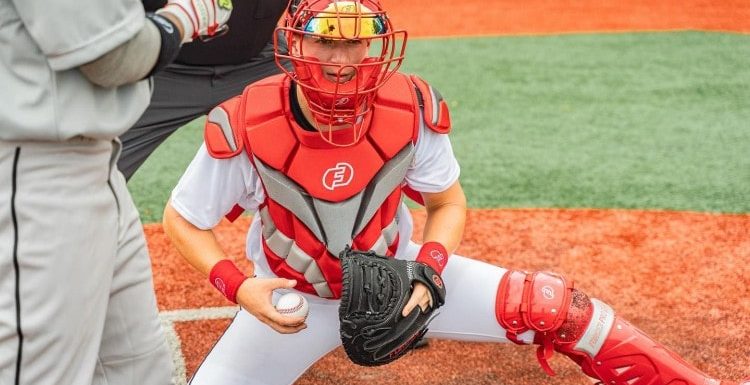
Softball is an exciting and fast-paced sport in the USA that requires players to be equipped with the right gear, especially regarding safety. A reliable softball helmet is one essential piece of equipment that every softball player should invest in. A softball helmet protects the player’s head from potential injuries and enhances their performance on the field. In this article discussion, we will explore the important factors to consider when selecting a softball helmet to ensure safety and performance.
Softball is a high-intensity sport that involves fast pitches and powerful hits. As a result, players are exposed to potential head injuries due to errant pitches, line drives, or collisions with other players. A softball helmet is essential to minimize the risk of these injuries. A well-chosen helmet protects the player’s head and boosts their confidence and overall performance.
1. Importance of Softball Helmets
Softball helmets safeguard players from head injuries, including concussions, fractures, and lacerations. The skull is a delicate part of the body, and any severe impact can have long-lasting effects. Wearing a helmet especially decreases the risk of these injuries by providing a protective barrier between the head and the impact.
2. Safety Standards and Certifications
When purchasing a softball helmet, it is crucial to ensure that it meets the crucial safety standards and certifications. Look for helmets that comply with the standards set by reputable organizations such as the National Operating Committee on Standards for Athletic Sports Equipment (NOCSAE) and the USA Society for Testing and Materials (ASTM). These certifications ensure the helmet has undergone rigorous testing to meet safety requirements.
3. Helmet Size and Fit
A properly fitting helmet is essential for optimal safety and comfort. When selecting a softball helmet, consider the circumference of the player’s head and choose the appropriate size accordingly. Most helmets have adjustable straps or fitting systems to achieve a snug and secure fit. It is crucial to try on different helmets to find the one that provides the best fit for the player.
4. Shell Material and Construction
Softball helmets are typically made of durable materials such as high-impact resistant ABS plastic or polycarbonate. These materials offer excellent protection against impacts while maintaining a lightweight design. The helmet should feature a sturdy construction that can withstand the forces encountered during gameplay.
5. Padding and Impact Absorption
The interior padding of a softball helmet plays a critical role in absorbing and dissipating the impact energy during a collision. Look for helmets with thick, moisture-wicking padding that provides both comfort and protection. The padding should be strategically placed in key areas, such as the crown and sides of the helmet, to ensure maximum coverage.
6. Face Guard Options
Some softball leagues require the use of faceguards for additional protection. Faceguards are attachments that cover the front of the helmet, shielding the face from potential injuries. Various faceguard options are available, including wire cages and clear shields. Check the league regulations to determine if faceguards are mandatory, and choose a helmet that accommodates these attachments if necessary.
7. Ventilation and Cooling
During intense gameplay, players can generate significant heat, making a softball helmet’s ventilation and cooling features essential. Look for helmets with strategically placed vents that promote airflow and prevent excessive sweating. Proper ventilation helps players stay cool and focused throughout the game.
8. Weight and Comfort
A lightweight helmet ensures that players can move freely without feeling encumbered. Heavy helmets can cause discomfort and fatigue over time, affecting performance. Choose a helmet that balances safety and weight, providing the necessary protection without compromising comfort.
9. Adjustability and Customization
Flexibility and adjustability are crucial factors to consider when selecting a softball helmet. Look for helmets that offer adjustable straps, padding, or fitting systems to achieve a customized fit. Additionally, some helmets come with customizable features such as removable padding or interchangeable facemasks, allowing players to personalize their gear.
10. Price Range and Budget Considerations
Softball helmets are available at a wide range of prices, so it is essential to establish a budget before making a purchase. While it’s important to prioritize safety and quality, options are available to suit different budgets.
11. Maintenance and Durability
To ensure the long-lasting of a softball helmet, proper maintenance is essential. Follow the manufacturer’s guidelines for cleaning and care. Regularly inspect the helmet for damage, and replace it if necessary. Investing in a durable helmet ensures that it will withstand the demands of the game and provide long-term protection.
12. Reviews and Recommendations
Before making a final decision, take the time to read reviews and seek recommendations from experienced softball players, coaches, or trusted sources. Their insights can provide valuable information about different helmet models’ performance, durability, and overall quality. Consider their feedback when making your selection.
Conclusion
Selecting the right softball helmet is crucial for ensuring safety and field performance. Consider the important factors discussed in this article, such as safety standards, size and fit, shell material, padding, face guard options, ventilation, weight, adjustability, and customization. Additionally, consider budget considerations, maintenance, and durability when making your decision. By prioritizing safety and quality, you can find a softball helmet that protects you while enhancing your overall playing experience.
